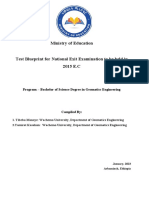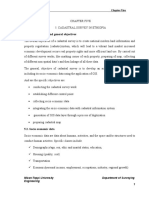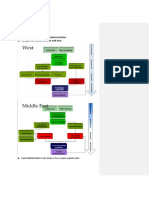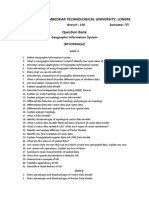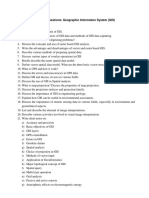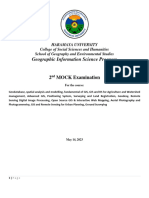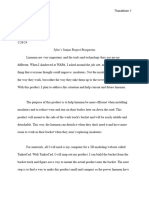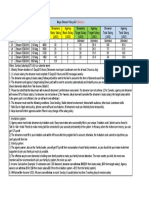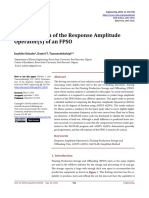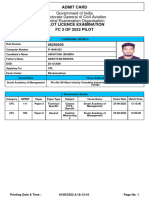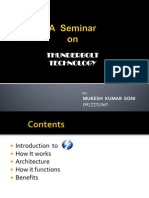100% found this document useful (1 vote)
667 views13 pages1st - MOOC - Exam - GIS2
The document contains a 35 multiple choice question quiz on topics related to geographic information systems (GIS), remote sensing, global navigation satellite systems (GNSS), and land administration systems. The questions cover concepts such as remote sensing indices, GIS data structures and analysis tools, components and applications of GNSS, the purpose and components of land administration systems, and basic units of parcel-based land information systems.
Uploaded by
y4494964Copyright
© © All Rights Reserved
We take content rights seriously. If you suspect this is your content, claim it here.
Available Formats
Download as PDF, TXT or read online on Scribd
100% found this document useful (1 vote)
667 views13 pages1st - MOOC - Exam - GIS2
The document contains a 35 multiple choice question quiz on topics related to geographic information systems (GIS), remote sensing, global navigation satellite systems (GNSS), and land administration systems. The questions cover concepts such as remote sensing indices, GIS data structures and analysis tools, components and applications of GNSS, the purpose and components of land administration systems, and basic units of parcel-based land information systems.
Uploaded by
y4494964Copyright
© © All Rights Reserved
We take content rights seriously. If you suspect this is your content, claim it here.
Available Formats
Download as PDF, TXT or read online on Scribd
/ 13






